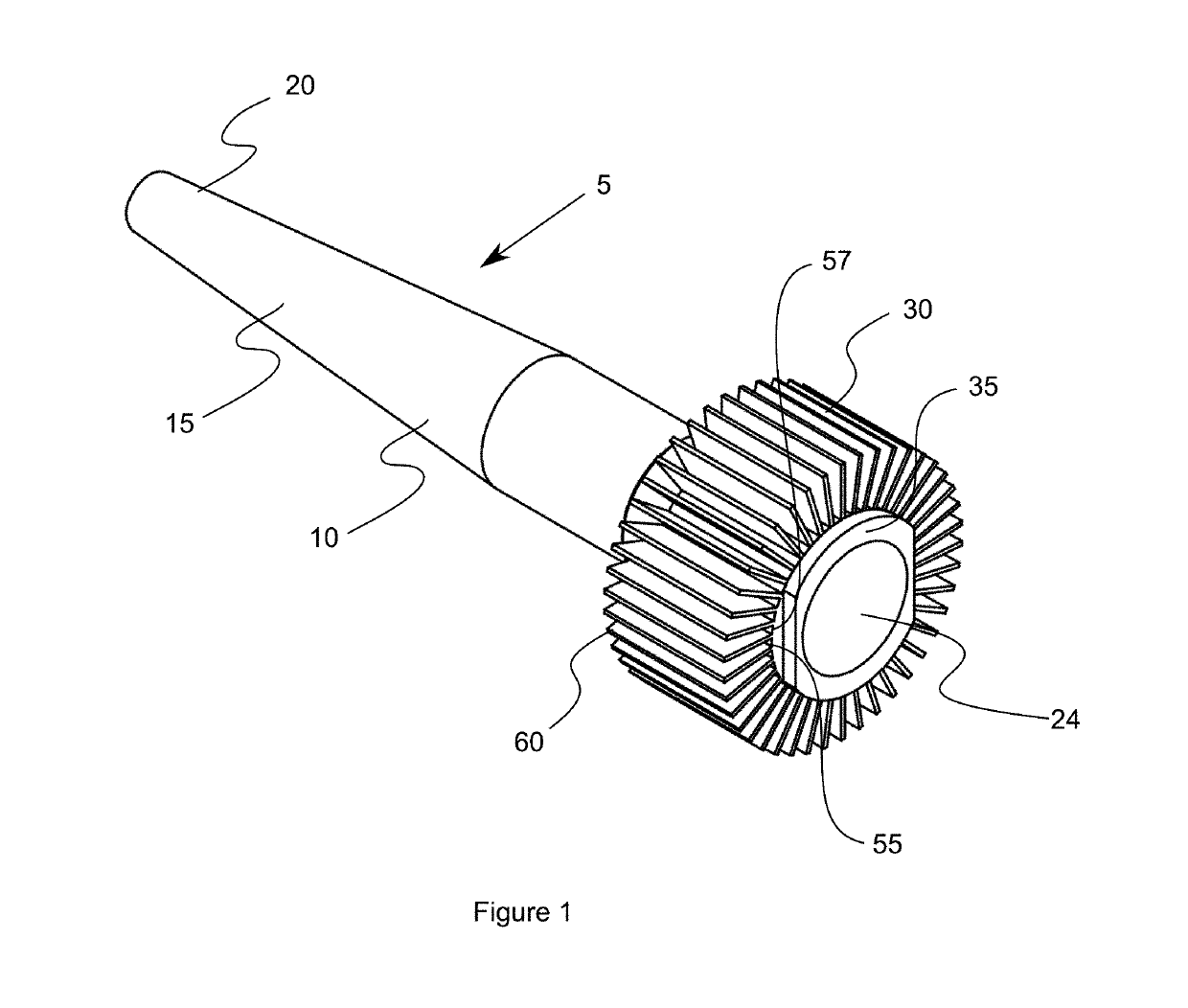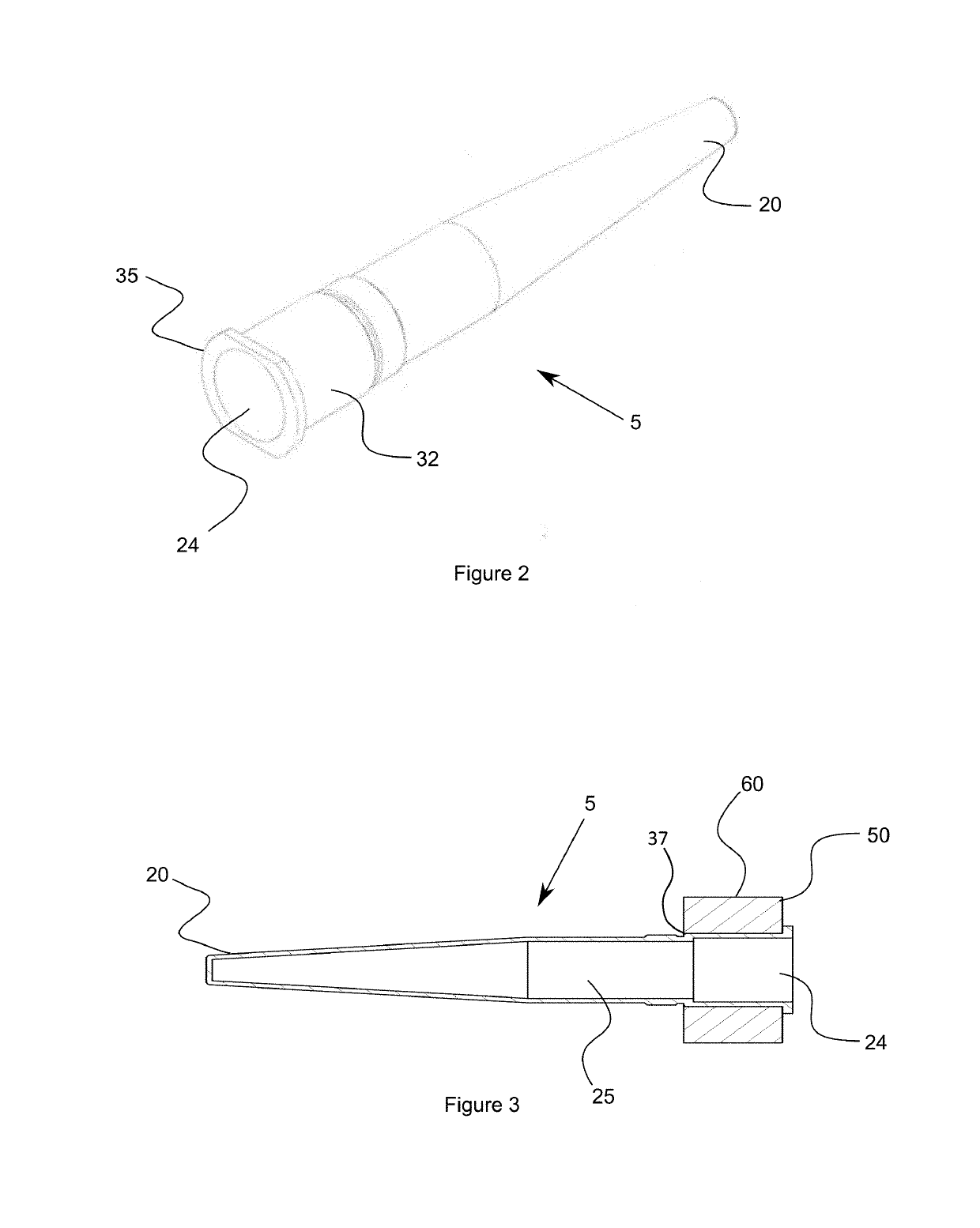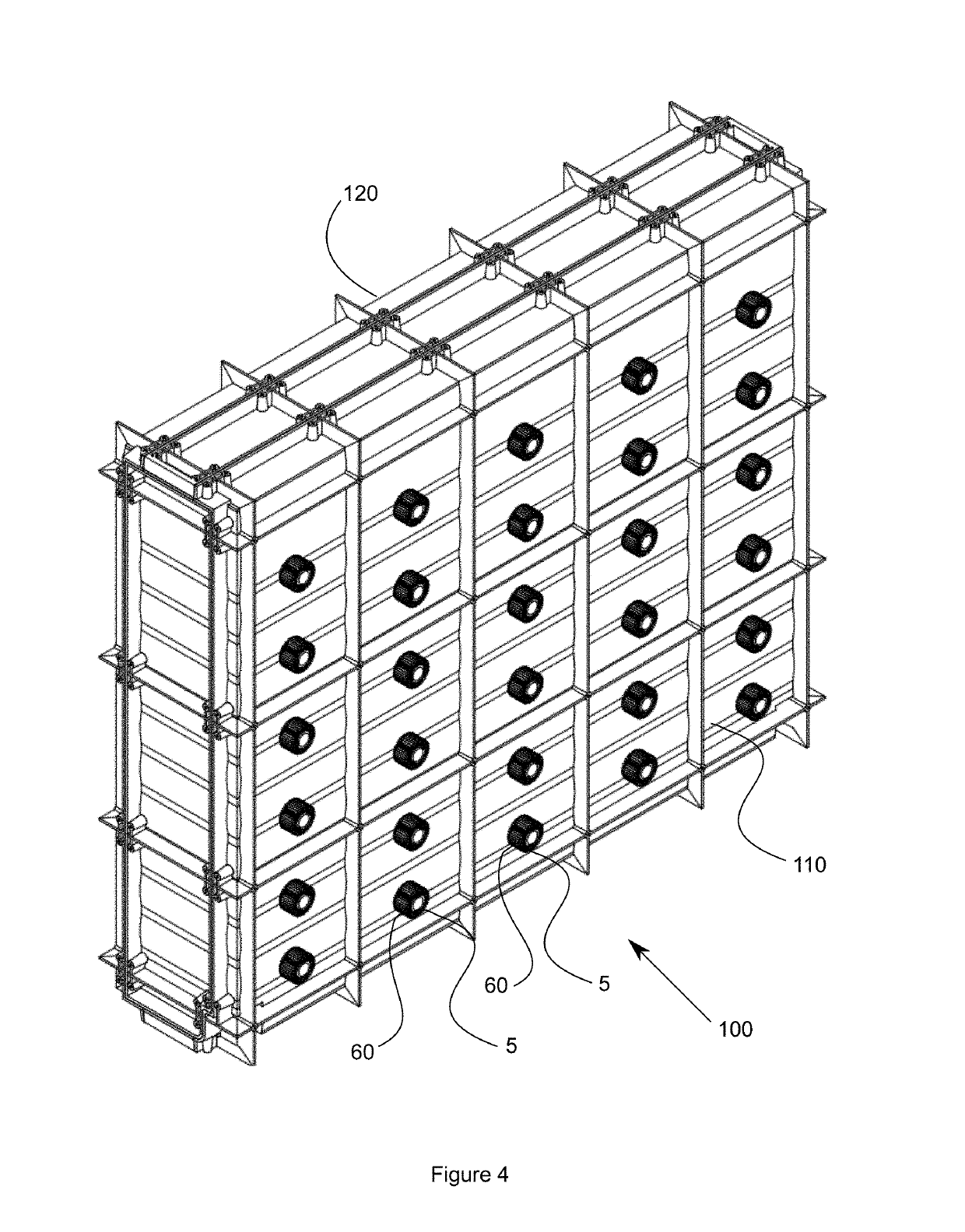Heatsink and heatpipes
- Summary
- Abstract
- Description
- Claims
- Application Information
AI Technical Summary
Benefits of technology
Problems solved by technology
Method used
Image
Examples
Embodiment Construction
[0048]FIG. 1 shows a preferred embodiment of the present invention 5, having a main cylindrical body 10 with a conical section 15 tapering towards a first end 20. The heat-first end 20 is the end of the heat pipe 5 that is inserted into a cavity on a surface of a rotational mold. Opposite to the first end 20 is the second end 30, about which there is a thermal energy absorbing / dissipating means 50. The second end 30 has a substantially uniform outer diameter with an outer surface 32, and an end flange 35
[0049]The thermal energy absorbing / dissipating means 50 includes a circular main body 55 with an opening 57 shaped to allow the body 10 of the heat pipe 5 to be inserted into it and nestingly fit within. The heat pipe 5 can be press-fitted into the thermal energy absorbing / dissipating means so that there is a good surface-surface interaction between the thermal energy absorbing / dissipating means 50 and the condenser end 30, the flange 35 on the outer end of the second end 30 acting a...
PUM
| Property | Measurement | Unit |
|---|---|---|
| Energy | aaaaa | aaaaa |
| Heat | aaaaa | aaaaa |
Abstract
Description
Claims
Application Information
 Login to View More
Login to View More - R&D
- Intellectual Property
- Life Sciences
- Materials
- Tech Scout
- Unparalleled Data Quality
- Higher Quality Content
- 60% Fewer Hallucinations
Browse by: Latest US Patents, China's latest patents, Technical Efficacy Thesaurus, Application Domain, Technology Topic, Popular Technical Reports.
© 2025 PatSnap. All rights reserved.Legal|Privacy policy|Modern Slavery Act Transparency Statement|Sitemap|About US| Contact US: help@patsnap.com



